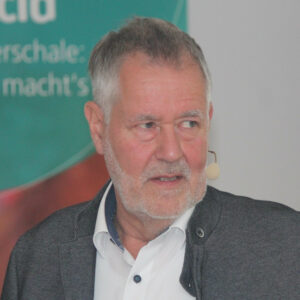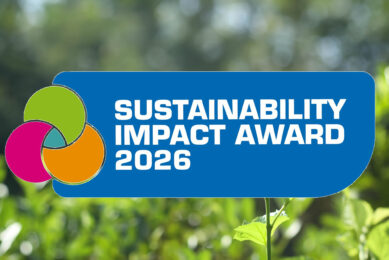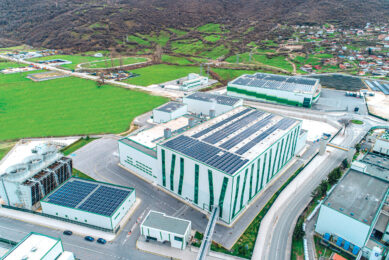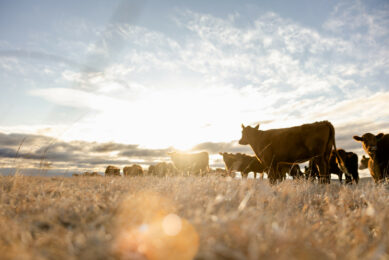Can we do without livestock? A plea for a circular economy
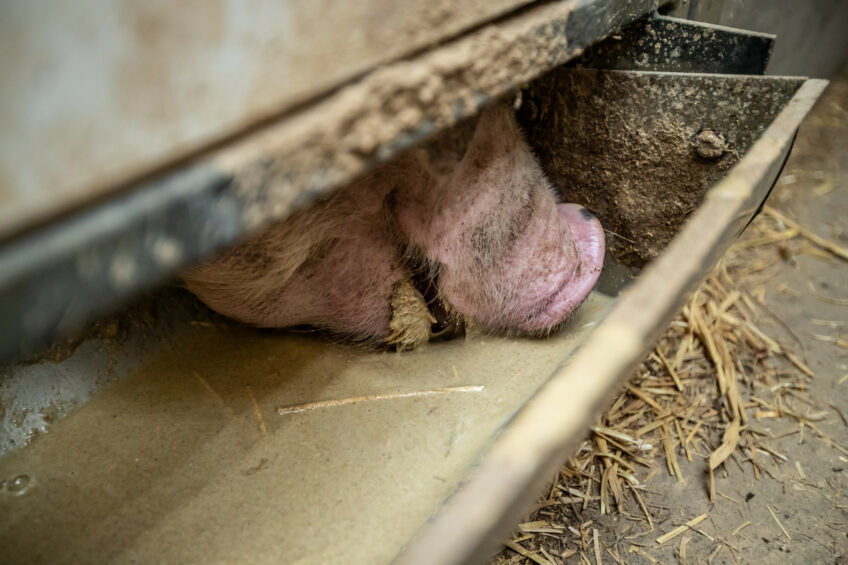
Some say that, in order to save the planet, mankind had better focus on becoming totally independent of livestock. Pigs, poultry and cattle, however, have an important role to play in order to achieve a truly circular economy – after all, what to do with leftovers of food production?
According to the latest estimates by the UN’s Food & Agriculture Organization (FAO), livestock is responsible for 14% of all anthropogenic greenhouse gas emissions. Indeed, in industrialised countries the contribution of livestock accounts for only around half the proportion, but this is mainly due to higher emission levels from other sectors (e.g., house climatization, transport, industry) compared to the global average. There is no doubt, therefore, that animal husbandry will also have a role to play in contributing to reducing emissions. At the same time, the global demand for food is increasing so dramatically that livestock farming will need to produce significantly more, even if alternative food sources are massively expanded.
In addition, agricultural land is becoming increasingly scarce due to global population growth, coupled with soil losses from urbanisation, erosion and desertification. The last is further exacerbated by climate change. In combination with climate change, agricultural land scarcity threatens global food security and could trigger human migration, worldwide. Even many industrialised countries with high population density are also indirectly affected by land scarcity, as consumption of food and feed requires often significantly more agricultural land than is available domestically (e.g., Germany: external land use accounts for two thirds of domestic land).
Towards circular economy
Despite the alarming scarcity of agricultural land, approximately 40% of global arable land is currently used to grow feed crops. This practice originated from the great successes in agriculture beginning in the mid-20th century. Mechanisation, fertilisation, crop protection, plant breeding and other advancements significantly increased crop yields, making cereals and other potentially edible crops virtually unlimited for use as animal feed. That gave rise to added-value systems of livestock production, where high-quality crops are transformed into even higher value animal-derived food products. Such economic conditions select livestock systems with high feed efficiency, predominantly poultry and partially also pigs.
However, these linear added-value systems will come under pressure. The growing global population will demand an increasing share of high-quality crops for direct human consumption, the more so as agricultural land will become increasingly scarce. Moreover, advancements in crop production appear to have stagnated, partly due to climate change. As a result, the growing limitation of resources will increasingly force livestock farming to transition from linear added-value systems to circularity. In other words, future livestock production systems must avoid competition with humans for high-quality crops.
Fork > Forage > Fuel
The human diet relies almost entirely on plant biomass derived from agriculture and horticulture. However, this biomass can only be harvested in the form of intact plants (or parts thereof), and the actual edible portion must first be laboriously extracted. This process begins on the field (e.g., harvesters) and continues during the processing of crops in the food industry (e.g., milling). For example, only about one third of the biomass from agricultural cultivation of wheat ends up in bread, while the majority remains as non-edible biomass (straw, bran). Every form of food production inevitably generates large quantities of biomass that are simply non-edible.
Non-edible biomass can be fed to livestock, which thereby converts it into edible biomass (meat, milk, eggs). Livestock, therefore, expands the overall food yield derived from the initial plant biomass grown on a limited area of agricultural land without introducing food competition. This is the fundamental role of livestock in our food systems since humans have been practicing agriculture. Alternatively, non-edible biomass could be used for energy production (e.g., combustion, biogas). However, this cannot compete with other techniques (e.g., photovoltaic) since the combustion energy of harvested plant biomass accounts for not even 5% of the solar energy that originally radiated onto the land.
The scarcity of agricultural land will lead to increasing shortages of plant biomass, as well. Its significance as a food source for humans will grow, and we must increasingly adhere to a utilisation cascade following the principle: Fork > Forage > Fuel.
The primary goal is the direct production of plant-based food for humans (Fork). The unavoidable residues from this process (non-edible biomass) are fed to livestock to produce additional food (Forage). Finally, energy production (Fuel) runs with biomass ending up as final residues from the Fork and Forage sector, e.g. livestock dung.
Non-edible biomass: an underrated resource
Large quantities of non-edible biomass are already produced on the field, during harvesting. These co-products (e.g., straw) often outweigh the mass of the primary harvest products. Further processing of these harvest products into final food items generates additional by-products (e.g., bran, extraction meal), which account for about one third of processed crops and serve as an important source of high-quality livestock feed. Permanent grassland is another significant source of non-edible biomass. Most of it is unsuitable for arable farming due to topographical and climatic conditions and, therefore, does not compete with the production of plant-based food. Globally, around 70% of total agricultural area consists of such grassland and, even in regions with intensive crop production, the share is significant (e.g., 30% in Germany).
In total, producing 1 kg of plant-based food generates at least around 4 kg of non-edible biomass. Vegan foods are no exception. For example, only about one sixth of the biomass from oat cultivation ends up in oat milk. For seitan, the wheat protein used to produce vegan imitations of sausage and meat, the yield is less than 10%. This demonstrates that all plant-based (vegan) foods generate multiple times their mass in non-edible residues throughout their production – from cultivation to processing and final product.
Circular agriculture with livestock
Non-edible biomass contains large quantities of plant nutrients that must be returned to the soil. This can be achieved through rotting on the field, fermentation in biogas digesters and using the residues as fertiliser or feeding it to livestock and fertilising the soil with dung. Rotting exhibits a low fertilising efficiency and thus entails low crop yields. In contrast, biogas residues as well as livestock dung may be applied in a much more targeted way resulting in roughly double the yield of crops. However, only by feeding it to livestock, the non-edible biomass can additionally generate food. The increase in total yield of calories and dietary protein from the same area of agricultural land accounts for at least 50% of the basal plant-based food production, without introducing food competition.
Making CH4 emissions climate-neutral
Ruminants are able to efficiently utilise non-edible biomass, but they also emit methane (CH₄). That is indeed a much more potent greenhouse gas than CO₂, although it is quickly degraded in the atmosphere. With a constant number of ruminants (i.e. a constant emission rate), the release and breakdown of atmospheric CH₄ remain in equilibrium, resulting in no net temperature change. In contrast, long-lived CO₂ accumulates in the atmosphere over time, causing cumulative warming. Therefore, the primary goal of climate protection must be to maintain the number of ruminants at a stable level, aligned with the utilisation cascade principle: Fork > Forage > Fuel. Under these conditions, CH₄ emissions from ruminants are practically climate neutral.
Too few livestock are harmful
Non-edible biomass is part of natural nutrient cycles and will release its bound carbon, nitrogen, phosphorus and other elements regardless of whether it rots on agricultural land or is processed via biogas or by livestock. Avoiding the feeding of non-edible biomass to livestock does not reduce environmental or climate impacts. The key difference lies in the loss of food production that livestock would otherwise generate from the non-edible biomass. To compensate, more intensive crop farming or additional arable land would be required, increasing emissions associated with feeding the same number of people. With current intensive livestock systems, however, feeding the same number of people also causes high emission levels, since a significant part of livestock production is based on food competition and land-use changes. Only when considering the cascade Fork > Forage > Fuel, will the overall impacts on environment and climate emissions be kept to a minimum.
Strengthening feed efficiency
Utilising biomass according to the cascade Fork > Forage > Fuel implies limitations on the quantity and quality of available feed, thereby reducing the production of animal-based food compared to the current situation. For ruminants, the expected losses are relatively minor, as they have traditionally been fed primarily on non-edible biomass. However, the production of pork, and especially of poultry products, would decrease dramatically since these animals require high-quality feed. In such a scenario, maximising feed efficiency becomes critically important.
That begins with optimised feed management from harvest over preservation up to feeding techniques, coupled with plant breeding also maximising the nutritive value of the non-edible parts of harvested plant materials. This is followed by precision feeding and stabilising the digestive efficiency of livestock. Another significant impact would come from avoiding “unproductive” feed consumption across the entire production system. Measures to ensure robust and rapid rearing of young animals, more production cycles without disturbances, longevity, improved animal welfare, and stable animal health significantly reduce unproductive feed consumption, regardless of the quality of the inedible biomass. Those measures also lower the methane (CH₄) burden from ruminant-derived products, since enteric methane production is primarily determined by feed intake.
Conclusions
The overall goal is to feed as many people as possible with minimal environmental and climate impacts. This is only achievable in a circular economy where crop farming and livestock are balanced according to the cascade Fork > Forage > Fuel. In other words, future food systems will respect biomass as a valuable, renewable resource that must not be wasted – whether edible or non-edible. Livestock is an essential part of that cycle.


